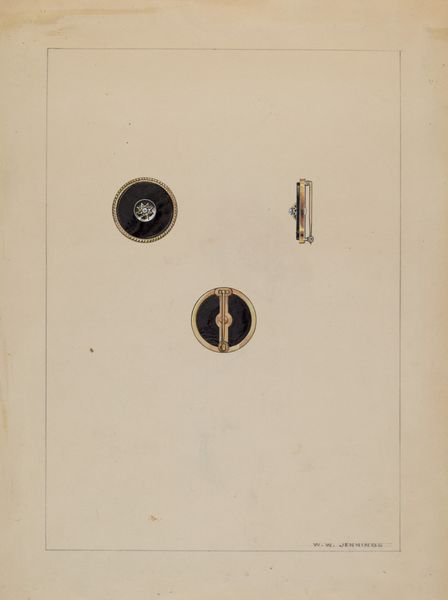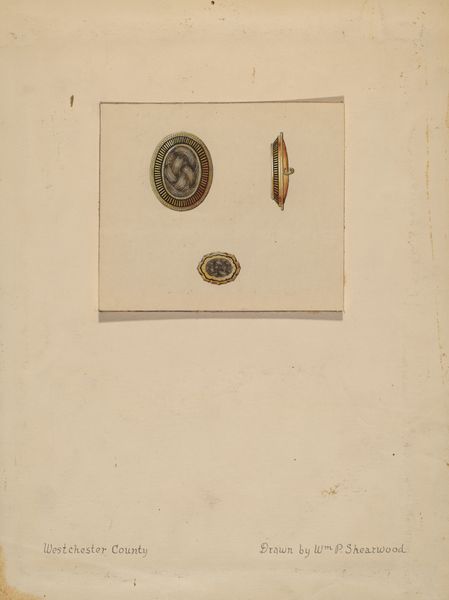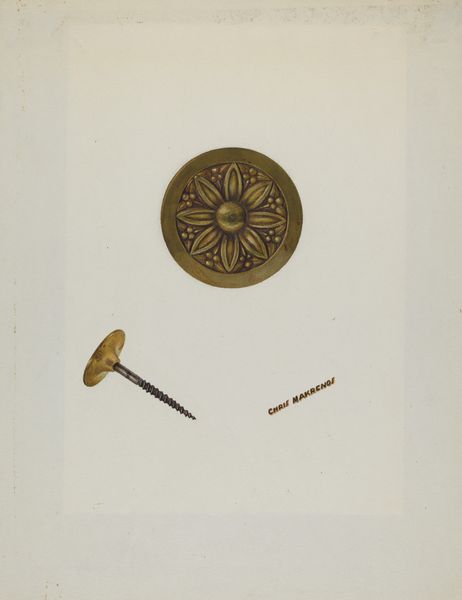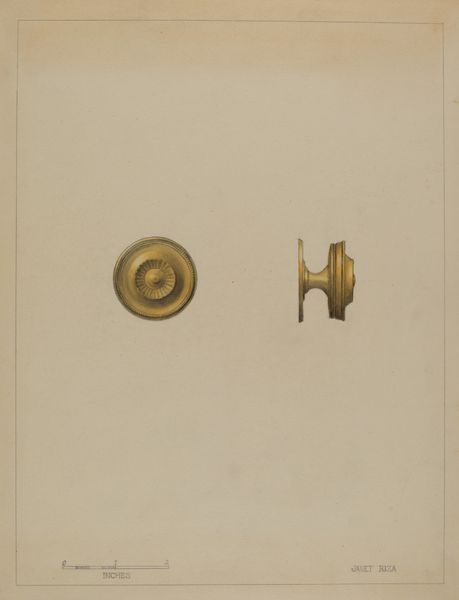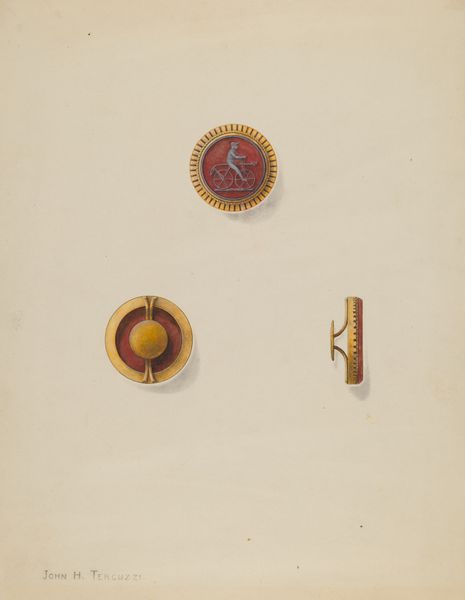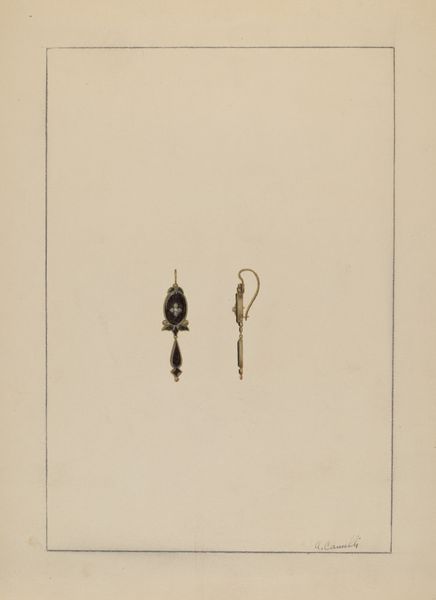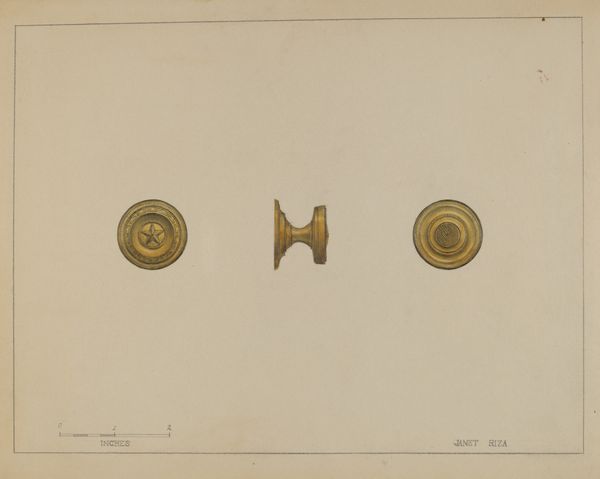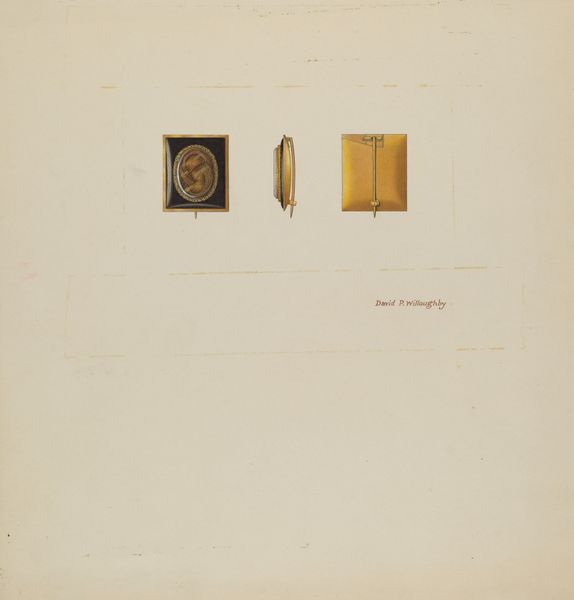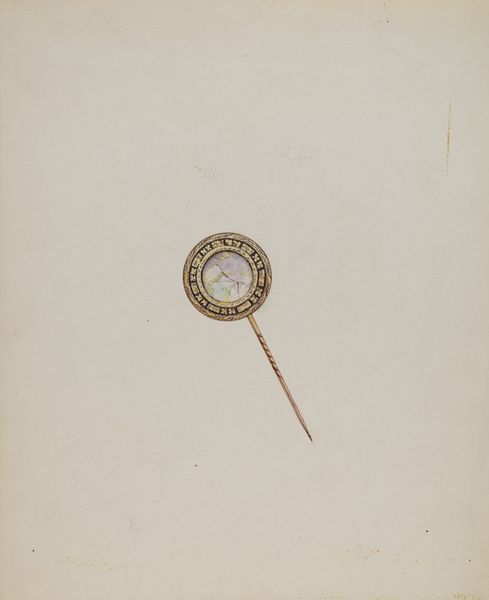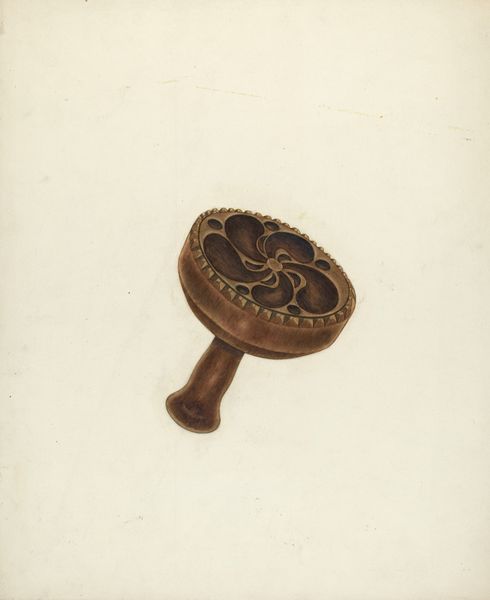
drawing, paper, pencil
#
drawing
#
paper
#
geometric
#
pencil
#
watercolor
Dimensions: overall: 29 x 22.6 cm (11 7/16 x 8 7/8 in.)
Copyright: National Gallery of Art: CC0 1.0
Editor: This is Philip Johnson’s “Drawer Pull,” a drawing from around 1936, rendered in pencil and watercolor on paper. There’s something quite elegant about it, a real attention to detail for such a small, functional object. How do you interpret this work beyond its straightforward depiction? Curator: I see it as a fascinating window into the aesthetic values of the 1930s and how even the most utilitarian objects were considered canvases for design. The drawer pull, presented with such precision and care, transcends its function. It speaks to a broader cultural context of the time—an era grappling with mass production and anxieties about the loss of craftsmanship. This wasn't merely about creating a functional handle; it was about imbuing everyday life with art, a rebellion against pure functionality in favor of something more human. Consider who benefits from such attention to detail, and whose labour is absent in this depiction. Editor: So, you're saying it's more than just a pretty drawing of a drawer pull; it’s a commentary on the relationship between art, labor, and industrialization? Curator: Precisely. And within that context, think about the intended audience. Who were these designs for? And what statements about class, access, and value are implicit in Johnson's deliberate artistry? Is he celebrating industrial design, or critiquing its potential to homogenize aesthetic experiences? We could even consider the gendered associations with domestic spaces and who is assigned or aspires to them, reflected through its function within interior space. Editor: I hadn’t considered it in those terms. It really challenges the notion of art existing separately from everyday life. Curator: It does, doesn't it? And in doing so, it prompts us to interrogate our own assumptions about what constitutes art, design, and ultimately, value. How much do aesthetics enhance daily living, and for whom? Editor: I'm definitely leaving here with a renewed perspective on the design of common items. Curator: As am I, seeing our reliance on designed functional objects which should remind us to interrogate assumptions of quality and value, in daily life.
Comments
No comments
Be the first to comment and join the conversation on the ultimate creative platform.
